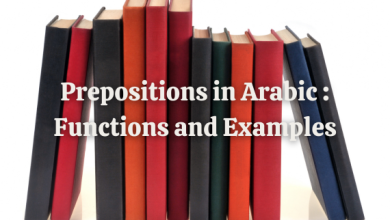Arabic is a Semitic language with a rich linguistic history and a complex structure that is quite distinct from English and other Indo-European languages. Understanding the sentence structure of Arabic is crucial for learners and linguists alike. Here, we’ll delve into the core aspects of Arabic sentence construction, highlighting its unique characteristics and rules.
Basic Arabic sentence structure Types

Arabic sentence structure can be broadly classified into two types: nominal sentences (جملة اسمية) and verbal sentences (جملة فعلية).
-
Nominal Sentences (جملة اسمية)
– A nominal sentence begins with a noun or pronoun and typically consists of a subject (مبتدأ) and a predicate (خبر).
– Example: البيت جميل (al-baytu jameelun) – “The house is beautiful.”
– In this sentence, “البيت” (the house) is the subject, and “جميل” (beautiful) is the predicate.
-
Verbal Sentences (جملة فعلية)
– A verbal sentence begins with a verb and is usually followed by the subject and the object.
– Example: كتب الطالب الدرس (kataba al-taalibu al-darsa) – “The student wrote the lesson.”
– Here, “كتب” (wrote) is the verb, “الطالب” (the student) is the subject, and “الدرس” (the lesson) is the object.
Sentence Components
-
The Verb (الفعل)
– Arabic verbs convey more grammatical information than their English counterparts, including tense, mood, voice, and person.
– Verbs are usually placed at the beginning of verbal sentences.
– They agree with the subject in gender and number.
-
The Subject (الفاعل)
– The subject can either follow the verb in verbal sentences or precede the predicate in nominal sentences.
– It must agree with the verb in both gender and number.
-
The Object (المفعول به)
– In verbal sentences, the object follows the subject.
– The object is often marked by an accusative case ending (usually a final -a).
Word Order
Arabic word order is relatively flexible compared to English. However, the most common word orders are:
– Verb-Subject-Object (VSO): كتب الولد الكتاب (kataba al-waladu al-kitaab) – “The boy wrote the book.”
– Subject-Verb-Object (SVO): الولد كتب الكتاب (al-waladu kataba al-kitaab) – “The boy wrote the book.”
The VSO order is more formal and common in written Arabic, whereas SVO can be found in both written and spoken forms.
Agreement and Cases
Arabic employs a case system to indicate the grammatical function of words in a sentence. The three main cases are:
– Nominative (مرفوع): Usually indicated by a final -u or -un, used for subjects and nominal predicates.
– Accusative (منصوب): Indicated by a final -a or -an, used for direct objects.
– Genitive (مجرور): Indicated by a final -i or -in, used after prepositions and to indicate possession.
Additional Elements
-
Modifiers and Adjectives (الصفات)
– Adjectives follow the noun they modify and agree in gender, number, definiteness, and case.
– Example: كتاب كبير (kitaabun kabeerun) – “A big book.”
-
Prepositional Phrases (العبارات الجرية)
– Prepositional phrases often consist of a preposition followed by a noun in the genitive case.
– Example: في البيت (fi al-bayti) – “In the house.”
-
Pronouns (الضمائر)
– Pronouns can be attached to verbs, prepositions, and nouns to indicate possession or object pronouns.
– Example: كتابه (kitaabuhu) – “His book.”
Complex Sentences

Arabic complex sentences are formed using conjunctions (such as و (and), أو (or), لكن (but)) to link clauses. Subordinate clauses often follow a relative pronoun such as الذي/التي (who, which).
Example:
– أحب الكتاب الذي قرأته (uhibbu al-kitaab al-ladhi qara’tahu) – “I love the book that you read.”
Conclusion
Understanding Arabic sentence structure requires familiarity with its unique components and rules. The flexibility in word order, the case system, and the agreement rules all contribute to the richness of Arabic syntax. By mastering these elements, learners can gain a deeper appreciation and proficiency in the Arabic language.




